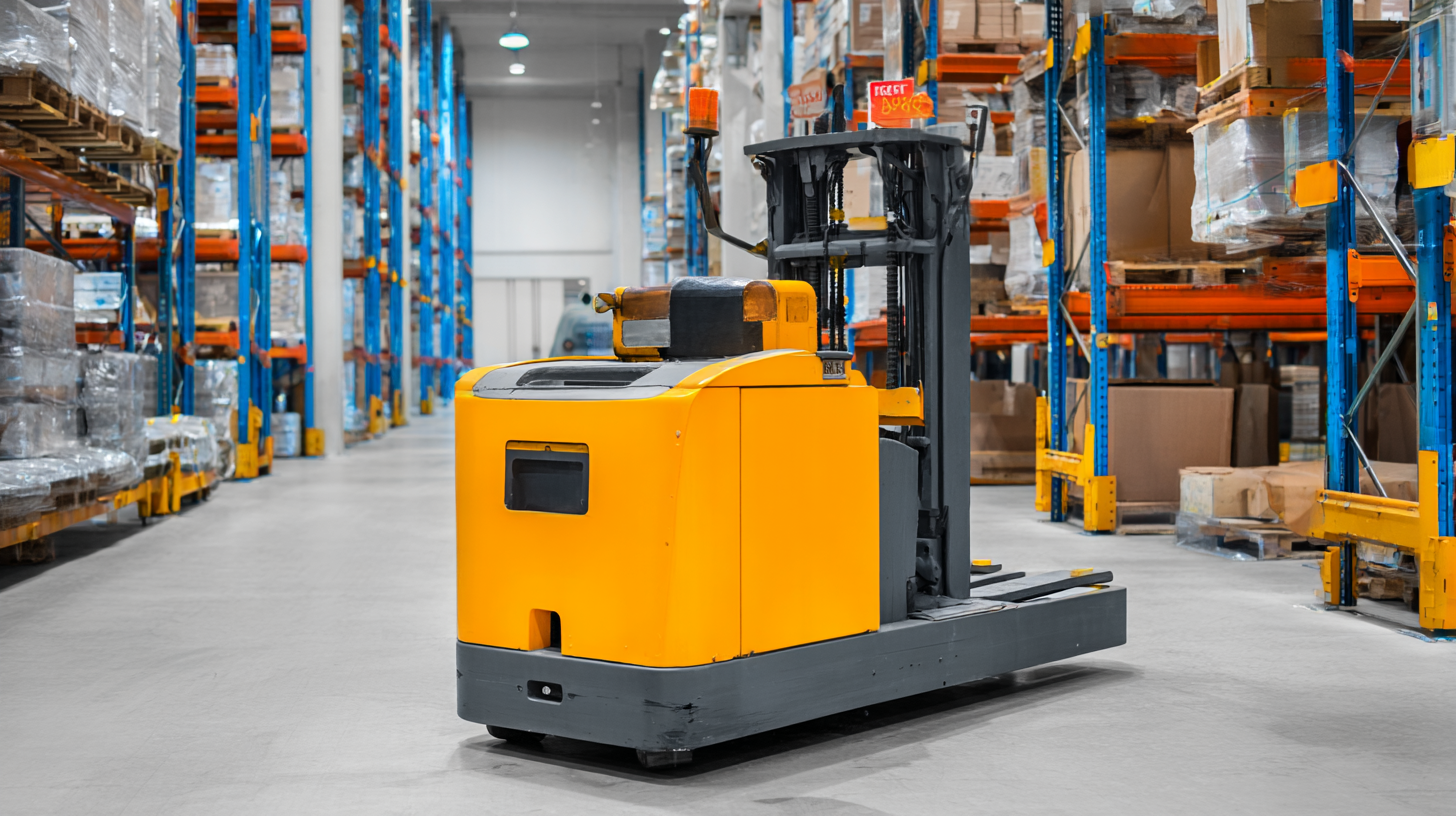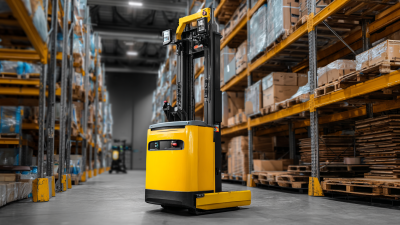Leave Your Message
In today's fast-paced logistics and warehousing environments, the efficient use of tools like the Powered Pallet Jack has become essential for optimizing operations. According to the Material Handling Industry of America, over 80% of warehouses have adopted powered equipment to enhance productivity and reduce manual labor. As businesses strive to keep pace with the growing demands of e-commerce and supply chain management, the importance of mastering powered equipment is increasingly recognized.

Dr. Rachel Johnson, a leading expert in warehouse optimization, emphasizes the significance of effective pallet jack use by stating, "Harnessing the power of a Powered Pallet Jack not only streamlines operations but also ensures the safety of the workforce." Utilizing these machines appropriately can lead to substantial improvements in efficiency and reductions in workplace injuries, making them invaluable to modern logistics operations.
The following article will outline ten essential tips for using a Powered Pallet Jack efficiently, offering insights that can lead to enhanced productivity and safety in material handling processes. Whether you are a seasoned operator or a newcomer to powered equipment, these strategies are designed to elevate your skills and ensure optimal performance in any warehouse setting.
Understanding the operation of a powered pallet jack is crucial for enhancing efficiency in material handling tasks. The basics include familiarizing yourself with the equipment's controls and safety features. Proper training is essential, as it not only ensures compliance with workplace safety regulations but also minimizes the risk of accidents.
When using a powered pallet jack, here are some essential tips to keep in mind. First, always maintain a clear line of sight while operating the jack; this allows for better navigation and awareness of your environment. Additionally, avoid exceeding the weight capacity of the jack, as this can lead to mechanical failure or tipping hazards. Regularly inspect the equipment for any wear and tear, and ensure that the battery is fully charged, especially with newer lithium-ion models that provide efficiency and reliability.
By understanding these fundamentals and adhering to best practices, operators can significantly enhance their productivity and safety in various material handling operations. This is particularly relevant as companies are increasingly integrating advanced solutions into their operations, highlighting the importance of knowledgeable and compliant usage of powered pallet jacks.
When operating a powered pallet jack, safety should always be the top priority. Before starting the machine, it is essential to familiarize yourself with its controls and operation mechanisms. Wearing the appropriate personal protective equipment, including gloves, safety shoes, and a hard hat, can prevent injuries and enhance your safety while using the equipment. Additionally, conducting a pre-operation inspection to check for any visible damage or mechanical issues can help identify problems before they lead to accidents.
While moving loads, it's crucial to maintain a clear line of sight and avoid obstacles in your path. Always ensure that the load is balanced and securely fastened to prevent it from shifting during transport. It is advisable to navigate slowly, especially when turning corners or approaching ramps, as sudden movements can lead to tipping or loss of control. Communicating with coworkers and using hand signals can further ensure that everyone is aware of the pallet jack’s movements, enhancing the overall safety of the work environment.
Maneuvering a powered pallet jack in tight spaces can be challenging yet essential for efficient warehouse operations. According to a report by the Material Handling Industry of America (MHIA), approximately 30% of workplace accidents occur in congested areas where equipment like pallet jacks are frequently used. To navigate effectively, operators should be trained to understand the turning radius of their specific equipment, typically around 180 degrees for most powered pallet jacks. This tight turning capability allows for effective aisle management, which can reduce the time spent moving products significantly, by approximately 20%.

Another critical technique is the alignment of the pallet jack with the load before lifting. A study from the Occupational Safety and Health Administration (OSHA) shows that improper alignment can lead to inefficient loading and unloading, increasing both time and the risk of accidents. Operators should position the pallet jack parallel to the load and ensure a secure grab. Additionally, utilizing a smooth, controlled movement when turning or positioning the pallet jack can further minimize the risk of mishaps, preserving not only the safety of the staff but also the integrity of the inventory. Keeping an eye on one's environment and communicating effectively with nearby coworkers can create a safer and more efficient workspace.
Regular maintenance of a powered pallet jack is crucial for ensuring its longevity and optimal performance. One essential tip is to clean the machine regularly. Dust and debris can accumulate in the moving parts, leading to wear and tear. Wiping down the exterior and removing any debris from the forks and wheels after each use will help maintain the equipment's efficiency. Additionally, checking and cleaning the battery terminals can prevent corrosion and extend battery life.
Another vital maintenance tip is to inspect the hydraulic system frequently. Look for any signs of leaks or damage in the hydraulic hoses and connections. Keeping the hydraulic fluid at the right level ensures that the pallet jack can lift and lower loads smoothly. If you notice any issues during your inspections, address them immediately to avoid more extensive repairs in the future.
Lastly, remember to regularly check the tires for wear and proper inflation. Worn tires can compromise the stability and maneuverability of the pallet jack, making it unsafe to operate. Ensuring that the tires are in good condition will enhance the overall performance and safety of the equipment, allowing you to use it efficiently for years to come.
Training and certification are crucial aspects of operating powered pallet jacks effectively and safely. Just as other industries have recognized the importance of structured training programs, such as those for water and wastewater operators or agriculture drone operators, the same principles apply to the use of powered pallet jacks. Comprehensive training ensures that operators are not only familiar with the equipment but also understand safety protocols, which are vital in preventing accidents in warehouse environments.

In addition to basic operation techniques, certification programs can enhance an operator's credentials, making them more valuable in the workforce. For example, systems like the Drinking Water and Wastewater Operator Certification underscore the necessity of professional licensure, equipping individuals with the skills needed to manage critical operations responsibly. Similar certifications for powered pallet jack operators can lead to improved job performance and compliance with workplace safety regulations, fostering a culture of safety and efficiency in material handling operations.






